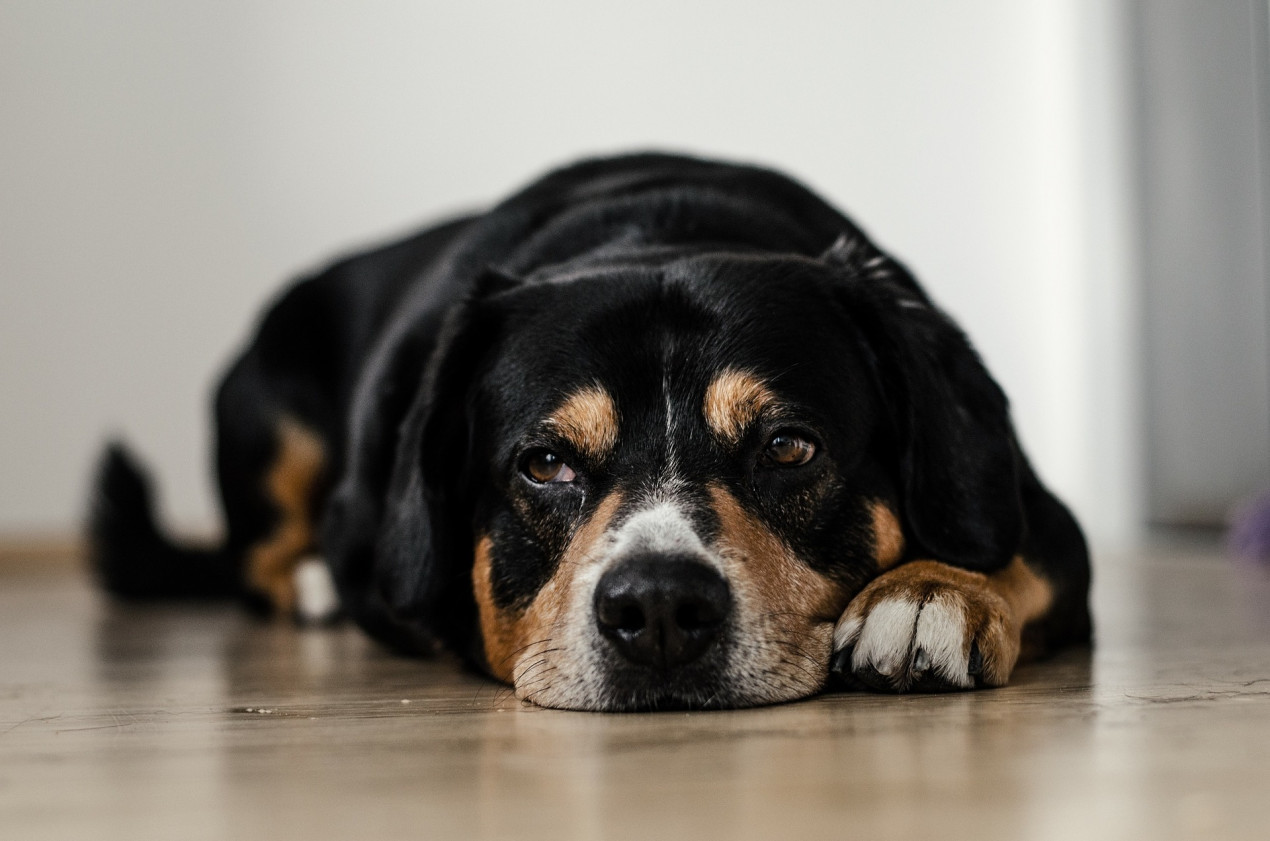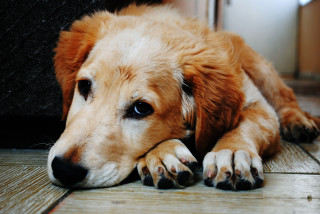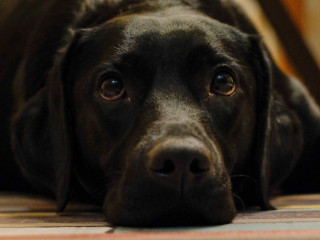We're here to help

What is constipation in dogs?
Constipation in dogs is when a dog is unable to poo, or is struggling to poo – which is typically dry and hard. Older dogs are more prone to constipation but it can be seen in any breed of dog at any age.
What should I do if my dog can't poop?
Constipation in dogs should not be ignored, as if left untreated it can lead to more serious issues. If your dog hasn’t pooed for more than 24 hours be sure to get it checked out by your vet. If you’re worried about your constipated dog call your vet or, out of hours, your nearest Vets Now. If it’s not an emergency but you would like some advice, book an online video consultation with our vets here.
How will I know if my dog is constipated?
A constipated dog will look like they are trying to poo, there may be liquid or mucus from the anus and redness or swelling around the anus.
It is important to identify whether your dog is trying to pass faeces (poo) or trying to urinate. Unfortunately, the signs can be quite similar, making it difficult to be sure what is going on.
If your dog is straining to pass urine, they will adopt a position to pass urine, you may see small amounts of urine or blood around the vulva or penis/sheath and they may lick the area.

What are the signs of constipation in dogs?
Your dog will struggle to poo and will either pass small amounts of hard poo or nothing at all. Your dog may show signs of discomfort or pain and may pass spots of blood. Confusingly, diarrhoea can also lead to straining, but you will normally have seen the evidence of loose or runny poo first.
If left untreated, constipation can lead to lethargy, vomiting, depression and loss of appetite.
What causes constipation in dogs?
The most common cause of constipation in dogs is swallowing objects that are not easily digested, such as bones, grass or hair. Other causes include lack of fibre, lack of exercise, blocked anal glands, certain intestinal problems, trauma to the pelvis an enlarged prostate, kidney disease or hernias.
What should I do if my dog is constipated?
Wear rubber gloves when dealing with faeces and related anal problems.
Check your dog’s temperature. If it is abnormally high or there is blood on the thermometer or resistance when inserting the thermometer, see your vet immediately.
If you can see a thread or string in the anus, do not pull it as this can cause internal damage.
If you can see grass in the anus, gently ease it out.
If faeces are matted around the anus, trim carefully with scissors. Wash the anal region with warm, soapy water and apply a soothing, water-soluble jelly (such as K-Y) to the inflamed area. Long-haired dogs, especially small ones like Yorkshire terriers, can become distressed with the discomfort caused by matted faeces around their bottom and the trimming process. You may need to soak your dog’s bottom in warm water before you begin trimming to make it more comfortable.

How will the vet diagnose dog constipation?
Diagnosis of constipation in dogs typically involves examining your dog’s abdomen and performing a rectal examination. Your vet may also ask if your dog has a history of dietary indiscretion (a tendency to eat unusual items).
In order to determine the cause of your dog’s constipation, your vet will want to know how long your dog has been constipated. They will also want to know if your dog has eaten anything unusual or indigestible which may have increased ‘faecal bulk’ or could be causing pain which is hindering your dog’s ability to defecate.
Your vet may also consider other potentially relevant factors including recent surgery, previous pelvic trauma, and possibly radiation therapy. X-rays, abdominal ultrasound or blood tests may be required to identify any underlying cause of dog constipation.
What is the treatment for dog constipation?
Treatment for mild constipation typically involves stopping your dog eating unusual or indigestible items and providing access to water and a high-fibre diet. Suppository laxatives may also be given, although long-term use is not recommended unless absolutely necessary.
Treatment of mild to moderate constipation may involve admitting your dog so that he can be given enemas and fluids (a drip) to rehydrate them. Manual removal of impacted faeces may also be necessary. In cases of intact (uncastrated) males where the prostate is the cause of constipation, castration may be recommended.
What to give a dog for constipation?
In order to provide dog constipation relief, things your vet may recommend include:
- A stool softener or laxative (for short-term use)
- Other medication to treat any underlying causes
- Adding fibre to your dog’s diet
- Increasing exercise
- An enema (which must only be administered by a vet to reduce the risk of toxicity or injury)
How can I prevent constipation in dogs?
In order to prevent constipation, dogs should be given a high-fibre diet, access to water, and frequent opportunities to defecate.
Avoid giving your dog bones. Neutering your dog at an early age will also prevent growth of the prostate, which can lead to constipation.

